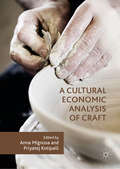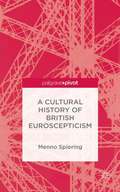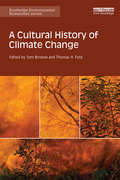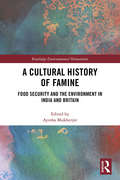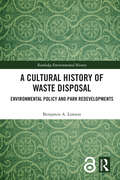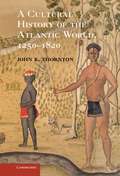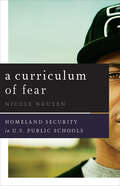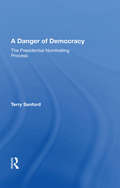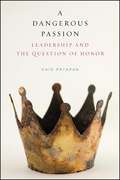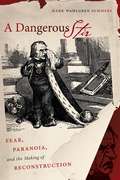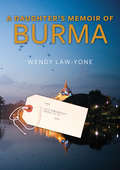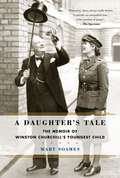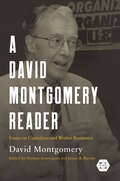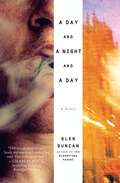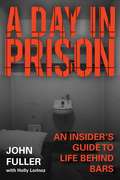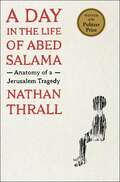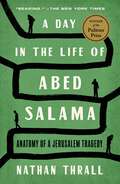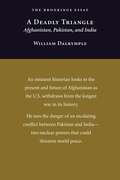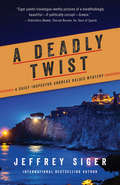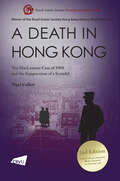- Table View
- List View
A Cultural Approach to Populism
by Juha HerkmanThis book is a critical introduction of theorisations and research on contemporary political populism emphasising the cultural perspective. It introduces the basic theories and analyses the cultural construction of populism regarding radical democratic theory and empirical studies. Applying Ernesto Laclau’s and Chantal Mouffe’s theories, the author builds a bridge between radical democratic and ideational approaches on populism with examples and studies that emphasise European radical right populism, alongside US, Latin American and Asian cases. Special attention is paid to relationships between populism and democracy and between populism and media. The contemporary appeal of populism is linked to current developments in welfare states and in global economic and cultural trends. The future of populism is discussed in regard to Covid-19 pandemic and Donald Trump’s fall in the US presidential elections in 2020 that together with above-mentioned global megatrends and with the development of media and communication environment set conditions for the 2020s populism. Scholars and students of political science, media and communication studies, cultural studies and social sciences will find this a unique and novel approach.
A Cultural Economic Analysis of Craft
by Anna Mignosa Priyatej KotipalliAre we aware of the values of craft? In this edited volume, cultural economists, researchers and professionals provide an interdisciplinary discussion of the relevance and contribution of the craft sector to the economy, as well as to society at large. Mignosa and Kotipalli bring together contributors to compare the craft sector across countries, analysing the role of institutions, educational bodies, organisations and market structure in its evolution and perception. The Western approach to craft and its subordinate position to the arts is contrasted with the prestige of craftmanship in Eastern countries, while the differing ways that craft has attracted the attention of policy agencies, museums, designers and private institutions across regions is also analysed. This volume is vital reading to those interested in the economic features of craft and craftsmanship around the world, as well as for those interested in the importance of policy in bringing about effective sustainable development.
A Cultural History of British Euroscepticism
by Menno SpieringWhy are the British so Euro-sceptic? Forget about tedious treaties, party politics or international relations. The real reason is that the British do not feel European. This book explores and explains the cultural divide between Britain and Europe, where it comes from and how it manifests itself in everyday life and the academic world.
A Cultural History of Climate Change (Routledge Environmental Humanities)
by Tom Bristow Thomas H. FordCharting innovative directions in the environmental humanities, this book examines the cultural history of climate change under three broad headings: history, writing and politics. Climate change compels us to rethink many of our traditional means of historical understanding, and demands new ways of relating human knowledge, action and representations to the dimensions of geological and evolutionary time. To address these challenges, this book positions our present moment of climatic knowledge within much longer histories of climatic experience. Only in light of these histories, it argues, can we properly understand what climate means today across an array of discursive domains, from politics, literature and law to neighbourly conversation. Its chapters identify turning-points and experiments in the construction of climates and of atmospheres of sensation. They examine how contemporary ecological thought has repoliticised the representation of nature and detail vital aspects of the history and prehistory of our climatic modernity. This ground-breaking text will be of great interest to researchers and postgraduate students in environmental history, environmental governance, history of ideas and science, literature and eco-criticism, political theory, cultural theory, as well as all general readers interested in climate change.
A Cultural History of Famine: Food Security and the Environment in India and Britain (Routledge Environmental Humanities)
by Ayesha MukherjeeThe term "food security" does not immediately signal research done in humanities disciplines. It refers to a complex, contested issue, whose currency and significance are hardly debatable given present concerns about environmental change, resource management, and sustainability. The subject is thus largely studied within science and social science disciplines in current or very recent historical contexts. This book brings together perspectives on food security and related environmental concerns from experts in the disciplines of literary studies, history, science, and social sciences. It allows readers to compare past and contemporary attitudes towards the issues in India and Britain – the economic, social, and environmental histories of these two nations have been closely connected ever since British travellers began to visit India in the latter half of the sixteenth century. The chapters in this book discuss themes such as climate, harvest failure, trade, technological improvements, transport networks, charity measures, and popular protest, which affected food security in both countries from the seventeenth century onwards. The authors cover a range of disciplinary and interdisciplinary approaches, and their chapters allow readers to understand and compare different methodologies as well as different contexts of time and place relevant to the topic. This book will be of great interest to students and researchers of economic and social history, environmental history, literary studies, and South Asian studies.
A Cultural History of Waste Disposal: Environmental Policy and Park Redevelopments (Routledge Environmental History)
by Benjamin A. LawsonThis book offers a historical analysis of landfill sites in New York City, Greater Toronto, and Greater Tel Aviv, and uses them as case studies to emphasize the international and global scale of issues concerning waste disposal and park redevelopments.New York, Toronto, and Tel Aviv are currently redeveloping giant landfills into parks to much fanfare. The park redevelopments may be seen as an attempt to erase or assuage the decades of problematic waste-disposal policy that led to the creation of such large landfills. Booster rhetoric underscores this point, such as promoting how the parks will be a “green lung” for the city. This book contextualizes these redevelopments by offering a historical analysis, providing a greater understanding of the past, current, and future potential issues. It goes on to analyze the language and media coverage surrounding former waste sites becoming park redevelopments, including how cities use art to promote their image and gain cultural relevance. By engaging with both the works of waste historians and literature on waste and discard studies, the book provides theoretical models for analyzing the role of power in municipal systems, as well as human and ecological impacts on waste. It concludes with an analysis of the features necessary for landfill parks to be successful. This book will be useful for scholars, researchers, and academics studying waste studies, the environment, cities, and sustainable development, as well as for policymakers and environmental/eco artists.
A Cultural History of the Atlantic World, 1250-1820
by John K. ThorntonA Cultural History of the Atlantic World, 1250–1820 explores the idea that strong links exist in the histories of Africa, Europe and North and South America. John K. Thornton provides a comprehensive overview of the history of the Atlantic Basin before 1830 by describing political, social and cultural interactions between the continents' inhabitants. He traces the backgrounds of the populations on these three continental landmasses brought into contact by European navigation. Thornton then examines the political and social implications of the encounters, tracing the origins of a variety of Atlantic societies and showing how new ways of eating, drinking, speaking and worshipping developed in the newly created Atlantic World. This book uses close readings of original sources to produce new interpretations of its subject.
A Cultural Interpretation of the Genocide Convention (Routledge Studies in Genocide and Crimes against Humanity)
by Kurt MundorffThis book critiques the dominant physical and biological interpretation of the Genocide Convention and argues that the idea of "culture" is central to properly understanding the crime of genocide. Using Raphael Lemkin’s personal papers, archival materials from the State Department and the UN, as well as the mid-century secondary literature, it situates the convention in the longstanding debate between Enlightenment notions of universality and individualism, and Romantic notions of particularism and holism. The author conducts a thorough review of the treaty and its preparatory work to show that the drafters brought strong culturalist ideas to the debate and that Lemkin’s ideas were held widely in the immediate postwar period. Reconstructing the mid-century conversation on genocide and situating it in the much broader mid-century discourse on justice and society he demonstrates that culture is not a distraction to be read out of the Genocide Convention; it is the very reason it exists. This volume poses a forceful challenge to the materialist interpretation and calls into question decades of international case law. It will be of interest to scholars of genocide, human rights, international law, the history of international law and human rights, and treaty interpretation.
A Culture of Its Own: Taking Latin America Seriously
by Mark FalcoffA Culture of Its Own: Taking Latin America Seriously presents Mark Falcoff's essays on the region. Many of them are contentious; none of them are dull. He ranges from bilingualism to the cult of Garcia Lorca, from U.S.-Cuban relations to Chile's curious love affair with Germany. On more than one occasion, Falcoff takes aim at American journalism and scholarship, both of which, he argues, have all too often produced a fantasy version of Latin America which reflects our own national narcissism rather than genuine curiosity about the other. Latin America, Falcoff argues, is not merely a geographical extension of the United States, or a kind of downmarket version of the American Southwest. It is a culture all its own, with its own historical memory, sensibility, and worldview. Its achievements -and its miseries-are also its own, not the end-product of policies made by the Pentagon, Wall Street, or the CIA.Falcoff writes about the region with originality, iconoclastic wit, and distinctive literary flair. His volume will interest Latin American specialists, diplomats, and journalists as well as those general readers who think they are not interested in Latin America-or who only suspect they might be, but don't know quite where to start.
A Culture of Rights: Law, Literature, and Canada
by Benjamin James AuthersWith the passage into law of the Canadian Charter of Rights and Freedoms in 1982, rights took on new legal, political, and social significance in Canada. In the decades following, Canadian jurisprudence has emphasised the importance of rights, determining their shape and asserting their centrality to legal ideas about what Canada represents. At the same time, an increasing number of Canadian novels have also engaged with the language of human rights and civil liberties, reflecting, like their counterparts in law, the possibilities of rights and the failure of their protection.In A Culture of Rights, Benjamin Authers reads novels by authors including Joy Kogawa, Margaret Atwood, Timothy Findley, and Jeanette Armstrong alongside legal texts and key constitutional rights cases, arguing for the need for a more complex, interdisciplinary understanding of the sources of rights in Canada and elsewhere. He suggests that, at present, even when rights are violated, popular insistence on Canada's rights-driven society remains. Despite the limited scope of our rights, and the deferral of more substantive rights protections to some projected, ideal Canada, we remain keen to promote ourselves as members of an entirely just society.
A Curriculum of Fear: Homeland Security in U.S. Public Schools
by Nicole NguyenWelcome to Milton High School, where fear is a teacher&’s best tool and every student is a soldier in the war on terror. A struggling public school outside the nation&’s capital, Milton sat squarely at the center of two trends: growing fear of resurgent terrorism and mounting pressure to run schools as job training sites. In response, the school established a specialized Homeland Security program. A Curriculum of Fear takes us into Milton for a day-to-day look at how such a program works, what it means to students and staff, and what it says about the militarization of U.S. public schools and, more broadly, the state of public education in this country. Nicole Nguyen guides us through a curriculum of national security–themed classes, electives, and internships designed through public-private partnerships with major defense contractors like Northrop Grumman and federal agencies like the NSA. She introduces us to students in the process of becoming a corps of &“diverse workers&” for the national security industry, learning to be &“vigilant&” citizens; and she shows us the everyday realities of a program intended to improve the school, revitalize the community, and eliminate the achievement gap. With reference to critical work on school militarization, neoliberal school reform, the impact of the global war on terror on everyday life, and the political uses of fear, A Curriculum of Fear maps the contexts that gave rise to Milton&’s Homeland Security program and its popularity. Ultimately, as the first ethnography of such a program, the book provides a disturbing close encounter with the new normal imposed by the global war on terror—a school at once under siege and actively preparing for the siege itself.
A Danger Of Democracy: The Presidential Nominating Process
by Terry SanfordQuail hunte rs appreciate a bird dog that doesn't give up ,th at ch ases the last bird after a covey rises, that is joyouslyunwilling to let even one get away . Old Pal was such a pointer ,an d on one day he leaped for a last fluttering single , missed ,of course, but, sad to say, leaped also over a sixty-foot cliffinto the icy Flint River. The moral is that he was going afterthe right bird b ut he wasn 't looking where he was going.The political party, with new rules calculated to open thepresidential nominating process, to involve more people ,to reach the ultimate in democracy , may find itself in thesame plight as th e conscientious pointer. It is possible to goover the cliff in reaching for too much democracy . Somethink the parties have already fallen into the river .
A Dangerous Passion: Leadership and the Question of Honor
by Haig PatapanA Dangerous Passion argues that leadership and honor are mutually constitutive and that this dynamic relationship fundamentally shapes the character of political practice. Haig Patapan shows how our contemporary blindness to this leadership-honor dynamic and neglect of the significance of honor (and shame) in modern politics have caused us to fundamentally misunderstand the nature of leadership. We have lost sight of how honor shapes the ambitions and aspirations of those who seek political office, and the opportunities and limits it imposes on leaders when engaging with their followers. What has been obscured are the two faces of honor: how it is the dangerous passion that fuels the ambitions of the glory seekers to pursue tyranny and empire, as well as being the source of good leadership that is founded on noble ambition and sacrifice for the common good. Patapan examines classical magnanimity, Machiavellian glory, and Hobbesian-dispersed leadership, views that continue to be debated, and then offers insights from these debates to illuminate a series of contemporary political challenges for leaders, including the politics of fame, identity, and nationalism.
A Dangerous Stir
by Mark Wahlgren SummersReconstruction policy after the Civil War, observes Mark Wahlgren Summers, was shaped not simply by politics, principles, and prejudices. Also at work were fears--often unreasonable fears of renewed civil war and a widespread sense that four years of war had thrown the normal constitutional process so dangerously out of kilter that the republic itself remained in peril. To understand Reconstruction, Summers contends, one must understand that the purpose of the North's war was--first and foremost--to save the Union with its republican institutions intact. During Reconstruction there were always fears in the mix--that the Civil War had settled nothing, that the Union was still in peril, and that its enemies and the enemies of republican government were more resilient and cunning than normal mortals. Many factors shaped the reintegration of the former Confederate states and the North's commitment to Reconstruction, Summers agrees, but the fears of war reigniting, plots against liberty, and a president prepared to father a coup d'etat ranked higher among them than historians have recognized. Both a dramatic narrative of the events of Reconstruction and a groundbreaking new look at what drove these events, A Dangerous Stir is also a valuable look at the role of fear in the politics of the time--and in politics in general.
A Daughter's Memoir of Burma
by Wendy Law-Yone David I. SteinbergWendy Law-Yone was fifteen at the time of Burma's military coup in 1962. The daughter of Ed Law-Yone, daredevil proprietor of Rangoon Nation, Burma's leading postwar English-language daily, she experienced firsthand the perils and promises of a newly independent Burma.On the eve of Wendy's studies abroad, Ed Law-Yone was arrested, his newspaper shut down, and Wendy herself was briefly imprisoned. After his release, Ed fled to Thailand with his family, where he formed a government-in-exile and tried, unsuccessfully, to foment a revolution. Emigrating to America with his wife and children, Ed never gave up hope that Burma would adopt a new democratic government. While he died disappointed, he left in his daughter's care an illuminating trove of papers documenting the experiences of an eccentric, ambitious, humorous, and determined patriot, vividly recounting the realities of colonial rule, Japanese occupation, postwar reconstruction, and military dictatorship. This book tells the twin histories of Law-Yone's kin and country, a nation whose vicissitudes continue to intrigue the world.
A Daughter's Memoir of Burma: A Daughter's Memoir Of Burma
by Wendy Law-YoneWendy Law-Yone was just fifteen when Burma's military staged a coup and overthrew the civilian government in 1962. The daughter of Ed Law-Yone, the daredevil founder and chief editor of The Nation, Burma's leading postwar English-language newspaper, she experienced firsthand the perils and promises of a newly independent Burma. On the eve of Wendy's studies abroad, Ed Law-Yone was arrested and The Nation shut down. Wendy herself was briefly imprisoned. After his release, Ed fled to Thailand with his family, where he formed a government-in-exile and tried, unsuccessfully, to foment a revolution. Exiled to America with his wife and children, Ed never gave up hope that Burma would one day adopt a new democratic government. Though he died disappointed, he left in his daughter's care an illuminating trove of papers documenting the experiences of an eccentric, ambitious, humorous, and determined patriot, vividly recounting the realities of colonial rule, Japanese occupation, postwar reconstruction, and military dictatorship. This memoir tells the twin histories of Law-Yone's kin and his country, a nation whose vicissitudes continue to intrigue the world.
A Daughter's Tale: The Memoir of Winston Churchill's Youngest Child
by Mary SoamesIn this charming and intimate memoir, Winston Churchill's youngest daughter shares stories from her remarkable life--and tells of the unbreakable bond she forged with her father through some of the most tumultuous years in British history. Now approaching her ninetieth birthday, Mary Soames is the only surviving child of Winston and Clementine Churchill. Through a combination of personal reminiscences and never-before-published diary entries, she describes what it was like growing up as the scion of one of the lions of twentieth-century statecraft. Warm memories of a childhood spent roaming the grounds of the family's country estate, tending to a small menagerie of pets, evoke the idyllic mood of England between the wars. As she matures into one of her father's most trusted companions, we are given rare glimpses inside the glittering social milieu through which the Churchills moved--as well as the rough-and-tumble world of British politics. With fly-on-the-wall immediacy, Mary describes the momentous debate in Parliament where Prime Minister Neville Chamberlain was driven from office, paving the way for Winston Churchill's ascension and the grueling crucible of World War II. During the war Mary served as a gunner in the women's auxiliary, helping to shoot down the German V-1 rockets then bedeviling London. Styling herself as Private M. Churchill to avoid publicity, she led a unique double life that comes vividly alive again in the retelling. Splitting her time between luncheons at Chequers--where she spent time with the likes of Lord Mountbatten--and the turret of an anti-aircraft battery, she was never far from the center of the action. Hitler even reportedly hatched a plan, never consummated, to hire spies to seduce her in order to gain access to secret British war plans. She attended the Potsdam Conference as her father's aide-de-camp, arranging a memorable dinner with Harry Truman and Josef Stalin (whom she acidly remembers as "small, dapper, and rather twinkly"). And when British voters overwhelmingly turned on Churchill in the 1945 election, it is left to Mary to recount the pain and devastation her father could never publicly express. The mutual love and affection between Mary Soames and her parents pours forth from every page of this elegantly written memoir. A Daughter's Taleis both a moving personal history and a source of untold insight into one of the enduring icons of British national life.
A David Montgomery Reader: Essays on Capitalism and Worker Resistance (Working Class in American History)
by David W. MontgomeryA foundational figure in modern labor history, David Montgomery both redefined and reoriented the field. This collection of Montgomery’s most important published and unpublished articles and essays draws from the historian’s entire five-decade career. Taken together, the writings trace the development of Montgomery’s distinct voice and approach while providing a crucial window into an era that changed the ways scholars and the public understood working people’s place in American history. Three overarching themes and methods emerge from these essays: that class provided a rich reservoir of ideas and strategies for workers to build movements aimed at claiming their democratic rights; that capital endured with the power to manage the contours of economic life and the capacities of the state but that workers repeatedly and creatively mounted challenges to the terms of life and work dictated by capital; and that Montgomery’s method grounded his gritty empiricism and the conceptual richness of his analysis in the intimate social relations of production and of community, neighborhood, and family life.
A Day and a Night and a Day: A Novel
by Glen DuncanIn a windowless cell, a man hangs from a pair of handcuffs. He is an american. His torturer will stop at nothing to extract the information he requires.He, too, is an american.A Day and a Night and a Day is a Grand Inquisition for the twenty-first century, in which love, loyalty, reason, and truth are on trial, and morality hangs in the balance. It is the story of Augustus Rose, an unlikely operative in a terrorist network, and his interrogator, Harper, a ruthless ambassador for the darkest forces at work in our times.Beyond the law and without hope of escape or reprieve, Augustus endures an emotional and physical assault that brings his whole life under brutal scrutiny: his race, religion, politics, and past, the people he has loved, and the few he is still desperate to protect. Alone and certain of death, Augustus raises the only shield he has: memory.He remembers his outcast Euro-American mother, Juliet, whose erratic love was refuge from the unforgiving streets of Harlem in the 1950s; he recalls the strange solace of Elise Merkete, the ravaged vigilante who recruited him into the ranks of her underground army; he relives the cool touch of the young Spanish prostitute, Inés, perhaps the last female tenderness he's ever likely to know. Outshining them all is the memory of Selina, a stunning, troubled, and rebellious white New York aristocrat. Their epic, taboo love affair, begun in 1960s Manhattan, would yield a lifetime's worth of passion, heartbreak, and wanderlust, leading Augustus from Harlem to Greenwich Village, from El Salvador to Barcelona, from Morocco to a bleak British island where death seems his only companion.Dramatic, far-reaching, and beautifully written, A Day and a Night and a Day is both a piercing love story and a timely, harrowing evaluation of the shape the Western world is taking.
A Day in Prison: An Insider's Guide to Life Behind Bars
by John Fuller Holly LorinczTwenty-four hours is a lot of time in prison, and here is a moment to moment guide of how each one goes by.A Day in Prison shows what life is like for prisoners from morning roll call to lights out. It tracks the many ins and outs of prison culture and provides a comprehensive look into the dynamics that define inmates’ daily interactions with each other, prison guards, and prison administrators. It gives a full sense of the challenges?small and large?presented to inmates as they try to survive each day.The book is structured like an actual day in prison, hour by hour, tracking where in the prison a prisoner would most likely be and what they would most likely be doing. It brings a clear sense of the unique environment that is a prison and makes sense of it for the reader, step-by-step. Based in the author’s own experience, being incarcerated for eleven years, it is as realistic a guide to life in prison as any reader could have.
A Day in the Life of Abed Salama: Anatomy of a Jerusalem Tragedy
by Nathan ThrallImmersive and gripping, an intimate story of a deadly accident outside Jerusalem that unravels a tangle of lives, loves, enmities, and histories over the course of one revealing, heartbreaking day. <P><P> Five-year-old Milad Salama is excited for a school trip to a theme park on the outskirts of Jerusalem. On the way, his bus collides with a semitrailer. His father, Abed, gets word of the crash and rushes to the site. The scene is chaos—the children have been taken to different hospitals in Jerusalem and the West Bank; some are missing, others cannot be identified. Abed sets off on an odyssey to learn Milad’s fate. It is every parent’s worst nightmare, but for Abed it is compounded by the maze of physical, emotional, and bureaucratic obstacles he must navigate because he is Palestinian. He is on the wrong side of the separation wall, holds the wrong ID to pass the military checkpoints, and has the wrong papers to enter the city of Jerusalem. Abed’s quest to find Milad is interwoven with the stories of a cast of Jewish and Palestinian characters whose lives and histories unexpectedly converge. <P><P> In A Day in the Life of Abed Salama, Nathan Thrall—hailed for his “severe allergy to conventional wisdom” (Time)—offers an indelibly human portrait of the struggle over Israel/Palestine and a new understanding of the tragic history and reality of one of the most contested places on earth.
A Day in the Life of Abed Salama: Anatomy of a Jerusalem Tragedy
by Nathan ThrallWINNER OF THE 2024 PULITZER PRIZE FOR GENERAL NON-FICTIONNamed a Best Book of the Year by The New Yorker, The Economist, Time, The New Republic, and the Financial Times.Immersive and gripping, an intimate story of a deadly accident outside Jerusalem that unravels a tangle of lives, loves, enmities, and histories over the course of one revealing, heartbreaking day.Five-year-old Milad Salama is excited for a school trip to a theme park on the outskirts of Jerusalem. On the way, his bus collides with a semitrailer. His father, Abed, gets word of the crash and rushes to the site. The scene is chaos—the children have been taken to different hospitals in Jerusalem and the West Bank; some are missing, others cannot be identified. Abed sets off on an odyssey to learn Milad’s fate. It is every parent’s worst nightmare, but for Abed it is compounded by the maze of physical, emotional, and bureaucratic obstacles he must navigate because he is Palestinian. He is on the wrong side of the separation wall, holds the wrong ID to pass the military checkpoints, and has the wrong papers to enter the city of Jerusalem. Abed’s quest to find Milad is interwoven with the stories of a cast of Jewish and Palestinian characters whose lives and histories unexpectedly converge.In A Day in the Life of Abed Salama, Nathan Thrall—hailed for his “severe allergy to conventional wisdom” (Time)—offers an indelibly human portrait of the struggle over Israel/Palestine and a new understanding of the tragic history and reality of one of the most contested places on earth.
A Deadly Triangle
by William DalrympleAn eminent historian looks to the present and future of Afghanistan as the U.S. withdraws from the longest war in its history. THE BROOKINGS ESSAY: In the spirit of its commitment to high-quality, independent research, the Brookings Institution has commissioned works on major topics of public policy by distinguished authors, including Brookings scholars. The Brookings Essay is a multi-platform product aimed to engage readers in open dialogue and debate. The views expressed, however, are solely those of the author. Available in ebook only.
A Deadly Twist (Chief Inspector Andreas Kaldis Mysteries #11)
by Jeffrey SigerSome crimes can never be forgivenor atoned forWhen Athens journalist Nikoletta Elia disappears while on assignment on the island of Naxos, her editor calls on Chief Inspector Andreas Kaldis to investigate. Sent to report on the conflict between preservationists and advocates for expanded tourism, Nikoletta is approached by a fan who takes credit for several suspicious deaths she'd reported on in the past. The assassin claims to have abandoned that life, and convinces the reporter to write about him and his murderous exploits for hire.Kaldis sends his deputy, Yianni, to look into her disappearance when an unidentified body is found at the base of a cliff. Who is the mysterious corpse, and where is Nikoletta? Leads turn into more dead bodies in this twisting tale of greed, corruption, and murder that puts Kaldis, his family, and members of his team in the path of a ruthless killer who will stop at nothing to keep dark secrets buriedforever.
A Death in Hong Kong: The MacLennan Case of 1980 and the Suppression of a Scandal (2nd Edition) (Royal Asiatic Society Hong Kong Studies)
by Nigel CollettIn January 1980, a young police officer named John MacLennan committed suicide in his Ho Man Tin flat. His death came mere hours before he was to be arrested for committing homosexual acts still, at that point, illegal in Hong Kong. But this was more than the desperate act of a young man, ashamed and afraid; both his death and the subsequent investigation were a smokescreen for a scandal that went to the heart of the establishment. MacLennan came to Hong Kong from Scotland during a tumultuous time in Hong Kong's history. The governorship of Sir Murray MacLehose was to be a time of reform and progress, but with that remit came the determination of many to suppress scandals and silence those who stirred up trouble. Both the life and death of John MacLennan seemed to many of those in power to threaten the stability of one of Britain's last colonies. The second edition includes a foreword by Christine Loh (former undersecretary for the environment, former legislator, and founder of Civic Exchange) as well as updated information from new interviews with key people involved in the case. With endorsements from human rights researchers and the local community, this book provides insight into Hong Kong during a time of social unrest and corruption scandals, a time when homosexuality and paedophilia were often considered interchangeable and both offered easy targets for blackmail.

